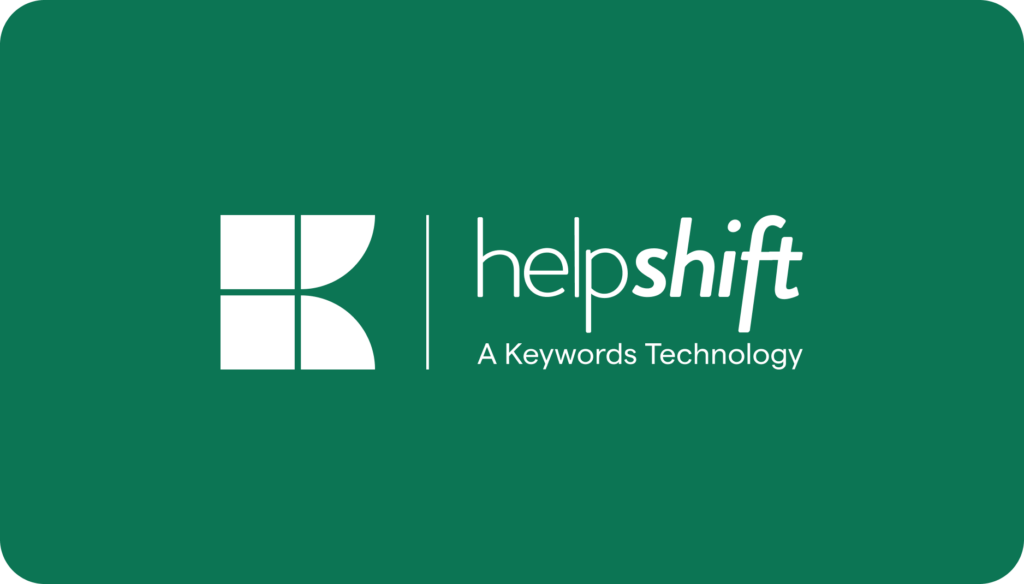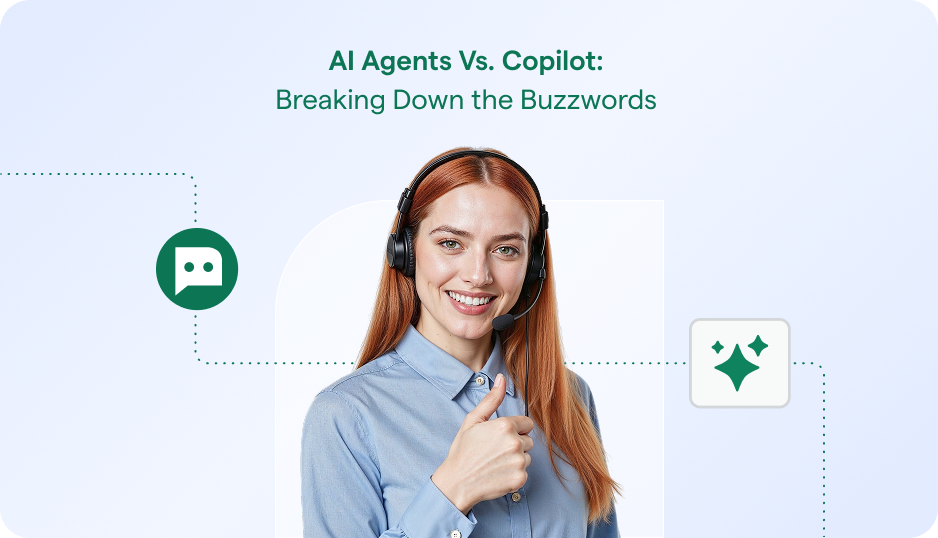In B2B customer service, every interaction matters to the bottom line. One missed alert can impact business relationships and revenue.
Top-performing companies understand this and turn their customer service from reactive helpdesks into partnership hubs.
And they’re seeing the results — stronger relationships, lower ticket resolution times, and more stable gaming experiences for everyone.
The gameplay behind the support is simple:
Effective CS service tool × Simplified integration = Scalable support success
Check out how companies implement outstanding customer service.
What is B2B customer service?
B2B customer service refers to all interactions between a business-to-business (B2B) company and its customers. It begins with the sales journey and continues throughout the customer journey, such as contract renewals or purchases.
B2B customers depend on their service providers. When you provide support to other businesses (platform providers, payment processors, or server hosts), you protect revenue through retention, enhanced player experiences, and business partnerships.
For example, in gaming, a support ticket rarely means a simple fix. It means understanding enterprise contracts, meeting service-level agreements, and protecting business interests on both sides.
Speaking of which — there’s a fundamental shift in how B2C support operates compared to customer service B2B.
How is B2B customer service different from B2C customer service?
Say, server instability hits during peak hours at a major gaming company. Two support teams spring into action — one handling individual player complaints, the other managing enterprise gaming partners.
Team A responds to the player frustrated about lag in their favorite battle royale game. The customer service representative checks the connection, walks through basic troubleshooting, and resolves the issue in 15 minutes.
Success metrics: Player satisfaction and quick resolution.
Team B tackles an urgent call from a platform partner hosting 50,000 active players. The support team assembles technical leads, checks SLA commitments, and coordinates with multiple stakeholders. Every minute of downtime costs real revenue.
Success metrics: Partnership health and business continuity.
Now, look at the key differences between the two gaming support models:
B2C customer service focuses on end consumers with simple one-to-one interactions, often automated and omnichannel, including social media, email, and chat. Transactions are high in volume but low in value, with feedback centered on user experience and features.
In contrast, B2B customer service caters to businesses, involving complex interactions across departments and multiple stakeholders. It emphasizes personalized support through formal channels like email, phone, and in-person meetings managed by dedicated account teams. B2B transactions are fewer but higher in value, with feedback focusing on customization and technical support.
While B2C SLAs are less formal, B2B SLAs are well-defined and supported by detailed product training for agents.
To cope with the high stakes in B2B and win customers’ trust, customer service must be defined at the front end.
B2B customer service examples that worked
Here is the list of 15 examples specially designed for B2B.
1. Automated FAQs with QuickSearch Bots
Support teams fielding repetitive queries face a critical choice: hire more agents or work smarter. But, 73% of users prioritize quick answers over human interaction.
Advanced FAQ automation shows how working smarter wins. Quick-search bots scan user queries, matching them with relevant solutions from the knowledge base.
Here, the tech doesn’t replace human support — it enhances it. When automated answers don’t solve the issue, conversations thereby transition to support specialists who also understand the context.
2. Time-based automation to assist SLA management
Time-based automation adds an extra layer of efficiency, automating SLA tracking across open tickets. When an agent hasn’t sent their first response or a user hasn’t replied, automatic triggers kick in. It frees your support teams from manual SLA tracking and lets them focus on solving complex integration issues.
The system also handles follow-ups, monitors response gaps, and maintains compliance without constant human oversight. Your partners can rest easy knowing their urgent issues get immediate attention at any hour of the day.
3. In-game support for player retention
Keeping players in the game while resolving issues has proved an effective tactic in gaming customer service. Sybo recently improved its support strategy by integrating SDK-based messaging directly into its game interface. As a result, support time dropped 86%, while customer satisfaction scores jumped from 3.8 to 4.3.
Now, players never leave their gaming session to get help. Support teams track real-time engagement, spot emerging issues, and protect revenue streams. For B2B gaming partners, this translates to stronger player retention and more stable communities.
4. Custom bots to solve ticketing triage
Imagine a support ticket arriving at 3 AM with minimal details about an in-game payment issue. Instead of keeping customers waiting in queue, a custom bot launches into action, performing five key diagnostic steps.
It pulls error logs, checks backend systems through API connections, asks targeted questions about transaction IDs, platform details, and error messages, and maps the impact across player sessions.
Within minutes, it gathers critical data that would’ve taken an agent multiple back-and-forth exchanges. By the time a specialist picks up the case, they have everything needed to dive straight into solving the problem.

5. Smart intents to automate routing
When a mobile gaming studio receives a flurry of partner tickets, it doesn’t always have to be clear and crisp. But Smart Intents recognize different phrases expressing the same problem — whether a player writes “payment gateway down” or “transaction failures mounting.”
No ticket gets lost in translation, and no player waits while support figures out who should handle their case. Payment issues reach the financial integration specialists, while server issues route to the infrastructure team.
The best part is the system grows smarter with each interaction, catching the subtle differences between integration issues, payment problems, and server alerts.
6. Machine translation with Language AI
With Language AI, companies targeting global customers stay front and center as multi-language support spans all corners.
Huuuge‘s gaming support team faced a bottleneck recently: players from 195 countries but not enough multilingual agents. But they took swift actions — sought the help of Language AI and ditched the clunky process of switching tabs and copy-pasting translations.
Now, English-speaking agents help Russian, Chinese, and Japanese players directly in their native languages. Support flows 24/7 across 36 languages; no specialized language agents are needed. Response times dropped 21%, while player satisfaction jumped, especially in the Asian markets.

7. Data-driven analysis for response tracking
Support managers have to address certain blind spots regularly: Which agents excel? Do FAQs actually help users? Are response times impacting satisfaction? Traditional metrics tell half-stories, leaving leaders guessing about team effectiveness.
A central analytics hub can be your best bet here. It
- Tracks real agent impact through acceptance rates and resolution times
- Reveals which FAQs deflect tickets successfully and which need improvement
- Compares performance across apps to spot winning patterns in user satisfaction
These insights let you refine customer service strategies based on what actually works, not what you think might work.
8. Digital self-service with a knowledge base
Players hate leaving their game to hunt for answers. Also, your support team hates answering the same questions repeatedly.
Digital self-service fixes both problems. Convert those repetitive queries into crisp FAQs, add troubleshooting tools, and watch your players solve problems independently.
Bytro Labs proved this works: they tackled 17,000 monthly tickets with just 2.5 agents. Issues needing human touch only reached the team, and the rest were tackled by a self-service knowledge base – the foundation, not an afterthought.
9. Email-based support to modern messaging-based support system
Fragmented email threads and slow response times are the best ways to annoy players (and your agents). In a similar situation, switching from email to a modern messaging-based support system changed everything for Jam City.
Players now get instant responses without leaving their game, while support teams handle multiple conversations efficiently with the full context of each player’s history.
Their ticket volume dropped 30% while customer satisfaction doubled. The real-time messaging system also provided valuable insights into recurring issues.
Adapting to modern customer service enhancement meets not only the demand of customers but also the overall quality of customer service.
10. Improve agent performance with task automation
Your support agents burn out when ticket volumes increase and resolution time suffers.
But with task automation, the agent saves time(and energy)
When you automate a task, operations continue without interruptions as support platforms automatically tag tickets, route them to the right specialists, and send instant acknowledgments to customers.
When simple issues come in, they’re resolved automatically with helpful responses. After preset timeframes, tickets update their status without manual intervention. Thus, issues that require human expertise (only) are aligned with agents.
11. Unified dashboard for multiple stakeholders’ engagement
Coordination between teams is a serious gap that needs to be addressed. Support managers can’t effectively track agent workload when critical player issues involve multiple departments, and your developers miss insights about recurring problems.
A unified analytics dashboard solves this. You get real-time visibility across teams, track your support queues, measure agent performance, and evaluate self-help effectiveness all in one place. Your teams can also monitor essential KPIs and customer sentiment instantly.

12. AI Chatbot to deflect common queries
Let’s say a customer reports a server glitch in a critical match, but your support team is swamped. Handling it becomes haywire now.
But then, If you have an AI chatbot, it deciphers the issue using natural language processing (NLP), identifies it as a server problem, and provides an immediate workaround from your approved content.
But, if the issue is too complex, the bot routes it to a specialist with all the necessary context. Ultimately, your players stay in the game, your CSAT scores improve, and your reputation stays intact.
13. Multi-channel communication for collective collaboration
Fragmented interactions can create chaos for your team, especially when agents switch between Facebook, Discord, and WhatsApp conversations.
Here, a multichannel communication system is key to bringing teams together for collective collaboration. By unifying messaging from multiple channels; your team can access complete conversation histories in one place where everyone stays on the same page.
Whether messaging, phone calls, or self-service options, your team can work together like never before.

14. Feedback bot to improve player experience
There is no guesswork when it comes to customer service effectiveness.
The feedback bots engage customers right after resolution through purposeful conversation steps. Through focused check-ins, it sees if customers got what they needed, gathers insights about their experience, and catches anyone still stuck.
This way, routine follow-ups become opportunities to improve player support and strengthen service quality through real player insights.

15. QR code integration for quick resolution
Console players hit a wall when errors pop up. Controller typing turns a simple support request into a tedious ordeal.
QR codes placed on error screens or packaging provide instant mobile access to support. Players can scan to join discussions, access FAQs, or connect with the community all through phones.
It helps keep players with quick navigation for resolution without having to juggle across menus to connect with the right experts.
You save your customer time and also a headache ^_^
Win Customer Relationship with Helpshift
The B2B customer service examples we’ve explored show how modern support tools transform reactive helpdesks into strategic assets. Helpshift brings these capabilities together:
- In-game SDK integration that keeps players in their gaming sessions while getting help
- Real-time Discord support integration for gaming communities
- Language AI handling support across 75+ languages
- Smart routing and automation that protects SLA commitments
- AI copilot tools enhance agent productivity without replacing human expertise
Your gaming partnerships carry high stakes — every support interaction impacts thousands of players and real revenue. This understanding has shaped how 500+ gaming companies deliver player support today. Start your 30-day free trial to test the features now.



